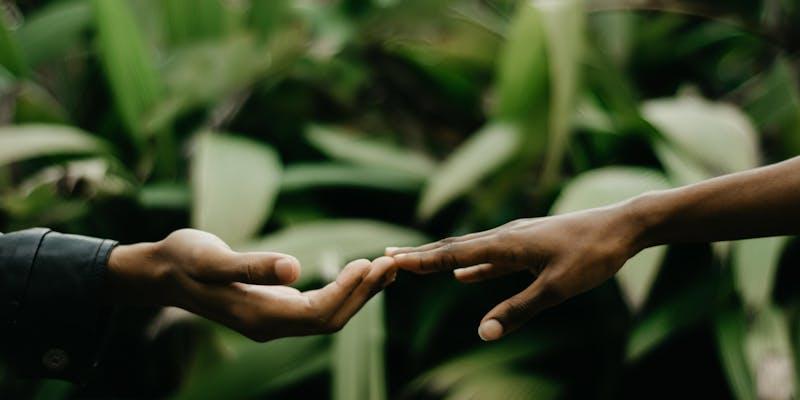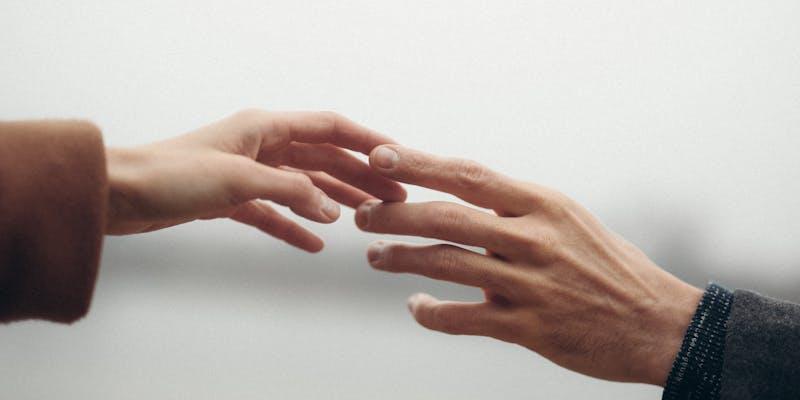Advertisement
Why Your Sense of Touch Weakens with Age and How to Fix It
Nov 13, 2024 By Noa Ensign
Many older adults can't hear, see, touch, taste, or smell as well as they did ten, twenty, or thirty years ago. Why? As we age, our abilities get weaker. These changes start around age 50 most of the time. When older family and friends start to wear bifocals, turn the TV sound, or add more seasoning to food, things change. Don't worryall of these are typical signs of getting older. However, in some cases, changes in your sense of smell, taste, hearing, or touch may mean something is wrong. Thats why you should get regular check-ups when you are old.
Despite being the most vital sense, touch gets the least attention. We can live without seeing, hearing, tasting, or smelling, but we'd go crazy without touching. Most nerve endings are in the skin, the body's largest organ. People crave touch and ache when they don't get it. Other than hugging or kissing, a simple arm or shoulder pat shows concern. For older people, these concerns mean a lot. But with a declining sense of touch, they might start to get depressed or, worse, sick. If you also notice that your elderly are not responding to your touch like they used to, it might be time to get them to a doctor.
Signs of Impaired Touch Sensation in Old People

Watching how someone acts and reacts in ordinary situations can reveal a poor sense of touch. Some signs include:
Handling Pain
Another sign is how someone handles pain. People with weak touch may not experience pain or respond to moderate discomfort. Some places can be too sensitive if a light squeeze causes a strong reaction.
Inability to Respond to Pressure
Another crucial indicator is the inability to respond to pressure. Someone who never responds to gentle skin contact may not be able to feel as well as they used to.
Stopping or Changing Habits
Finally, their holding habits can reveal information. Stopping hobbies like sewing, gardening, or pet play can also be an indication. These hobbies require tactile feedback; therefore, a lack of interest can indicate a problem with touch.
What Causes Touch Deficit?
Many medical conditions and lifestyle decisions can induce your sense of touch receptors. Understanding these reasons is essential for effective management and therapy. Some causes of declining sense of touch with age are:
Parkinson
Parkinson's disease is a neurological disease that impairs movement and reduces touch sensitivity. The condition alters the neurological system, affecting sensory perception. Patients may feel numb or have diminished sensation, making daily life difficult.
Brief Strokes
Brain blood flow interruptions cause transient ischemic attacks (TIAs), smaller than strokes. Touch loss can occur quickly. Depending on the brain region, hands and feet may tingle or numb.
Insufficient Blood Flow
Reduced blood flow from hand edema might impair touch. Edema can crush nerves and blood vessels, causing tingling or weakness. Your sensation of touch depends on properly circulating blood.
Arthritis
Rheumatoid arthritis causes joint inflammation and tissue damage. This inflammation can damage nerves, causing numbness. Pain and stiffness from arthritis can make it harder to move, which might impact your perception.
Sitting-around lifestyle
Staying in bed or sitting for long periods might induce muscular loss and nerve pinching. Without movement, the body becomes less habituated to sensory impulses, making touchless useful. Moving around and exercising consistently helps your senses and overall health.
How To Prevent the Loss of Sense of Touch with Age?

Treating your sense of touch activities is vital for your health, especially as you age or have health issues. Here are some ways to prevent or delay this decline in elderly people:
Exercise Regularly
Regular exercise improves blood flow, which keeps nerves healthy. Better blood flow oxygenates and nourishes your nerves. Walking, swimming, or yoga can help you stay occupied and calm. If youre helping an older person, encourage the person to play with textures or do small workouts to stimulate your sense of touch receptors. This improves their health, quality of life, and mood.
Manage Diabetes
People with diabetes must monitor their blood sugar levels. High blood sugar can harm limb nerves, causing diabetic neuropathy. Diet, exercise, and medication are sense-of-touch activities that keep your blood sugar constant.
Adjusting Pressure
It is vital to increase pressure when touching slowly for sense of touch activities. Test older peoples reaction with a bit of touch. Slowly apply additional pressure without hurting them. This approach can stimulate skin sense receptors, making people more touch-sensitive.
Temperature Awareness
Before entering the water, check the temperature to avoid burns. This is crucial for bathing and dishwashing. Check the water temperature with your elbow or a thermometer, not your hands, as your hands may lose sensitivity.
Dress Right
Check the weather before you feel hot or cold. This proactive strategy prevents temperature-related injuries, especially in extreme temperatures.
Check Your Skin
Check your skin and feet for cuts, blisters, and other injuries: These areas can become less sensitive over time. Maintaining your feet, wearing the correct shoes, and seeking medical attention for injuries helps prevent issues. It will help you keep your sense of touch and improve your quality of life.
Walking
Walking helps older adults use their senses, especially touch. Touching rough tree bark, soft grass, or a cold breeze increases health and well-being. Researchers have shown that even patients who have lost some senses can enjoy tactile sensations outside, with various textures to explore. Walk in diverse places to maximize this benefit.
You can feel varied textures in parks, hiking paths, and outdoor shopping. Walking with a friend or group makes it more pleasurable and likely to happen consistently. These options may improve neuroplasticity, balance, and walking, making movement easier. Touching the world makes walks more engaging and strengthens your connection to nature.
How Can Caregivers Help?
Helpers should be sympathetic and understanding when discussing losing touch. Communication is important in this helper-patient relationship. Before touching the elderly, always announce beforehand so theyd be prepared.
Moreover, always define your goals before touching them. For example, "I'm going to help you with your hand exercises now" or "I'm going to give your arm a gentle massage." This prepares the person psychologically and emotionally, building trust and safety.







